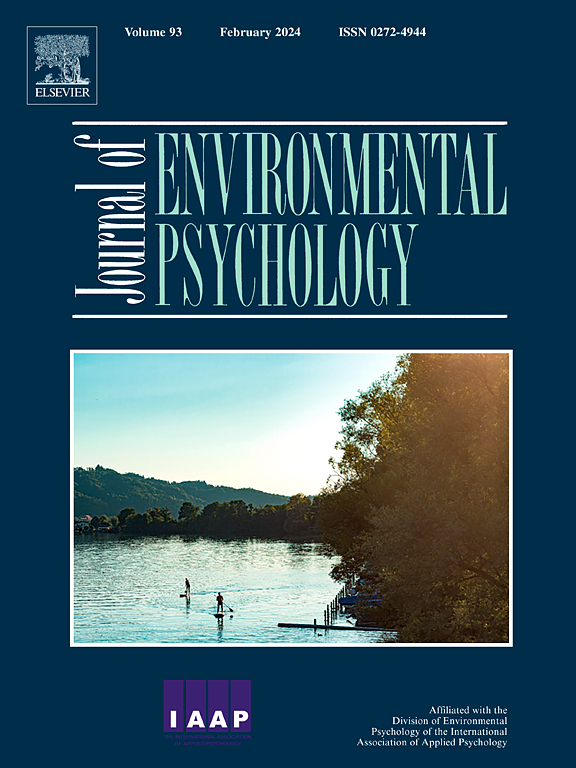The contribution of environmental sensitivity and connectedness to nature to mental health: Does nature view count?
IF 6.1
1区 心理学
Q1 ENVIRONMENTAL STUDIES
引用次数: 0
Abstract
The increasing prevalence of mental health concerns, coupled with rapid urbanization, underscores the need for comprehensive research into the complex dynamics between human beings and their natural surroundings. The present study seeks to elucidate the individual and interactive pathways linking environmental sensitivity, connectedness to nature, and exposure to nature with mental health outcomes. Data were collected via a cross-sectional survey involving a large sample of n = 807 Italian citizens. Bayesian analyses revealed that higher environmental sensitivity was associated with increased risk of reporting symptoms of stress, anxiety, and depression. Additionally, connectedness to nature mediated the relationship between environmental sensitivity and mental health problems, while nature exposure interacted with environmental sensitivity to predict levels of nature connectedness. Specifically, visual exposure to nature appears to enhance the feeling of connection to nature, particularly among highly sensitive individuals, thereby mitigating the risk of psychological distress. These findings suggest that fostering a connection with nature, particularly for those with high environmental sensitivity, may be a crucial strategy for promoting mental well-being in urban environments.
求助全文
约1分钟内获得全文
求助全文
来源期刊

Journal of Environmental Psychology
Multiple-
CiteScore
10.60
自引率
8.70%
发文量
140
审稿时长
62 days
期刊介绍:
The Journal of Environmental Psychology is the premier journal in the field, serving individuals in a wide range of disciplines who have an interest in the scientific study of the transactions and interrelationships between people and their surroundings (including built, social, natural and virtual environments, the use and abuse of nature and natural resources, and sustainability-related behavior). The journal publishes internationally contributed empirical studies and reviews of research on these topics that advance new insights. As an important forum for the field, the journal publishes some of the most influential papers in the discipline that reflect the scientific development of environmental psychology. Contributions on theoretical, methodological, and practical aspects of all human-environment interactions are welcome, along with innovative or interdisciplinary approaches that have a psychological emphasis. Research areas include: •Psychological and behavioral aspects of people and nature •Cognitive mapping, spatial cognition and wayfinding •Ecological consequences of human actions •Theories of place, place attachment, and place identity •Environmental risks and hazards: perception, behavior, and management •Perception and evaluation of buildings and natural landscapes •Effects of physical and natural settings on human cognition and health •Theories of proenvironmental behavior, norms, attitudes, and personality •Psychology of sustainability and climate change •Psychological aspects of resource management and crises •Social use of space: crowding, privacy, territoriality, personal space •Design of, and experiences related to, the physical aspects of workplaces, schools, residences, public buildings and public space
 求助内容:
求助内容: 应助结果提醒方式:
应助结果提醒方式:


